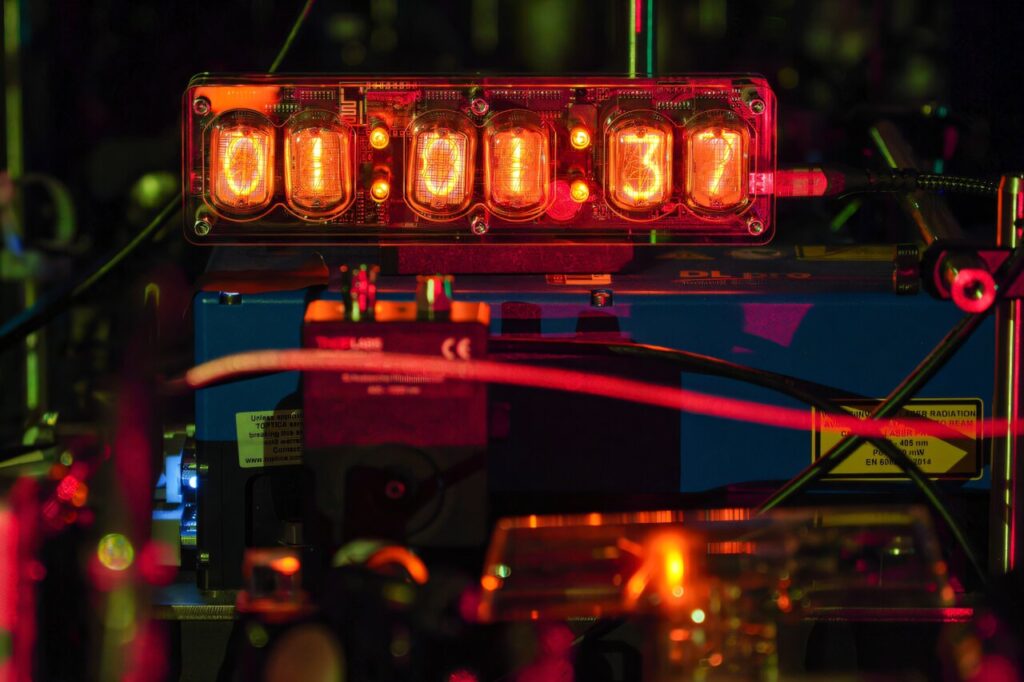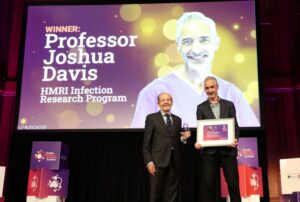
Every time you check the time on your phone, make an online transaction, or use a navigation app, you are relying on the precision of atomic clocks. These devices keep time by tracking the natural oscillations of atoms, which occur at incredibly stable frequencies. Currently, atomic clocks use cesium atoms, which oscillate more than 10 billion times per second, with lasers tracking these oscillations at microwave frequencies.
In a groundbreaking advancement, MIT physicists have developed a method to enhance the precision of optical atomic clocks by significantly reducing “quantum noise,” a fundamental limitation imposed by quantum mechanics. This noise obscures the pure oscillations of atoms, but the researchers have discovered a way to harness an effect previously considered irrelevant to further stabilize the clock’s laser.
Revolutionizing Timekeeping with Optical Atomic Clocks
Scientists are now focusing on next-generation atomic clocks that utilize faster-ticking atoms such as ytterbium. These atoms can be tracked with lasers at higher optical frequencies, potentially allowing clocks to measure time intervals as fine as 100 trillion ticks per second. The MIT team has found a way to improve the stability of these optical atomic clocks by employing a laser-induced “global phase” in ytterbium atoms, enhanced through a quantum-amplification technique.
This innovative approach, detailed in a study published in the journal Nature, doubles the precision of optical atomic clocks, enabling them to discern twice as many ticks per second. The researchers anticipate that this method’s precision will continue to increase with the number of atoms used in an atomic clock.
Quantum Entanglement: A Key to Precision
In 2020, the same team demonstrated that quantum entanglement could enhance atomic clock precision. Quantum entanglement causes particles to behave in a highly correlated manner, redistributing noise or uncertainty in the measurement of atomic oscillations. This results in a clearer, more measurable “tick.”
Previously, the team induced quantum entanglement among several hundred ytterbium atoms, cooled and trapped in a cavity formed by two mirrors. A laser sent into this cavity interacted with the atoms, causing them to entangle and improving the clock’s precision by reducing noise between the laser’s and atoms’ tick rates.
However, they were limited by the instability of the clock’s laser. In 2022, they developed a method to amplify the difference in tick rates using “time reversal,” which involves entangling and de-entangling atoms to boost the signal. Despite these advances, they were still using traditional microwaves, which oscillate at much lower frequencies than the optical frequency standards ytterbium atoms can provide.
Unveiling the Global Phase
In their latest study, the MIT researchers have applied their time reversal approach to optical atomic clocks by sending in a laser that oscillates near the optical frequency of the entangled atoms. “The laser ultimately inherits the ticking of the atoms,” explains first author Leon Zaporski. “But for this inheritance to hold, the laser must be stable.”
The team discovered that when light passes through entangled atoms, it causes the atoms to briefly gain energy before returning to their original state, retaining a memory of the interaction. This “global phase” contains information about the laser frequency, which can be used to stabilize the clock.
“One might think we’ve done nothing,” says study author Vladan Vuletić, the Lester Wolfe Professor of Physics at MIT. “You get this global phase of the atoms, which is usually considered irrelevant. But this global phase contains information about the laser frequency.”
By amplifying this phase difference above quantum noise, the researchers doubled the precision of their optical atomic clock. “We saw that we can now resolve nearly twice as small a difference in the optical frequency, or the clock ticking frequency, without running into the quantum noise limit,” Zaporski notes.
Implications and Future Prospects
This advancement could lead to the development of portable optical atomic clocks, capable of being transported to various locations for diverse applications. “With these clocks, people are trying to detect dark matter and dark energy, test fundamental forces, and even predict earthquakes,” Vuletić says. “We think our method can help make these clocks transportable and deployable to where they’re needed.”
The MIT team’s work represents a significant step forward in atomic clock technology, with potential implications for scientific research and practical applications worldwide. As the precision of these clocks continues to improve, they could revolutionize fields ranging from fundamental physics to geophysics and beyond.
The paper’s co-authors include Leon Zaporski, Qi Liu, Gustavo Velez, Matthew Radzihovsky, Zeyang Li, Simone Colombo, and Edwin Pedrozo-Peñafiel, all members of the MIT-Harvard Center for Ultracold Atoms and the MIT Research Laboratory of Electronics.




